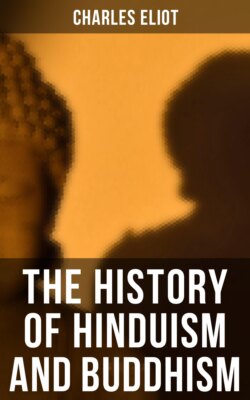Читать книгу The History of Hinduism and Buddhism - Charles Eliot - Страница 59
На сайте Литреса книга снята с продажи.
6
ОглавлениеIt is remarkable that Jainism is still a living sect, whereas the Buddhists have disappeared from India. Its strength and persistence are centred in its power of enlisting the interest of the laity and of forming them into a corporation. In theory the position of the Jain and Buddhist layman is the same. Both revere and support a religious order for which they have not a vocation, and are bound by minor vows less stringent than those of the monks. But among the Buddhists the members of the order came to be regarded more and more as the true church[291] and the laity tended to become (what they actually have become in China and Japan) pious persons who revere that order as something extraneous to themselves and very often only as one among several religious organizations. Hence when in India monasteries decayed or were destroyed, little active Buddhism was left outside them. But the wandering ascetics of the Jains never concentrated the strength of the religion in themselves to the same extent; the severity of their rule limited their numbers: the laity were wealthy and practically formed a caste; persecution acted as a tonic. As a result we have a sect analogous in some ways to the Jews, Parsis, and Quakers[292], among all of whom we find the same features, namely a wealthy laity, little or no sacerdotalism and endurance of persecution.
Another question of some interest is how far Jainism should be regarded as separate from Buddhism. Historically the position seems clear. Both are offshoots of a movement which was active in India in the sixth century B.C. in certain districts and especially among the aristocracy. Of these offshoots—the survivors among many which hardly outlived their birth—Jainism was a trifle the earlier, but Buddhism was superior and more satisfying to the intellect and moral sense alike. Out of the theory and practice of religious life current in their time Gotama fashioned a beautiful vase, Mahâvîra a homely but still durable pot. The resemblances between the two systems are not merely obvious but fundamental. Both had their origin outside the priestly class and owed much of their success to the protection of princes. Both preach a road to salvation open to man's unaided strength and needing neither sacrifice nor revealed lore. Both are universal, for though Buddhism set about its world mission with more knowledge and grasp of the task, the Jain sûtras are addressed "to Aryans and non-Aryans" and it is said that in modern times Mohammedans have been received into the Jain Church. Neither is theistic. Both believe in some form of reincarnation, in karma and in the periodical appearance of beings possessed of superhuman knowledge and called indifferently Jinas or Buddhas. The historian may therefore be disposed to regard the two religions as not differing much more than the varieties of Protestant Dissenters to be found in Great Britain. But the theologian will perceive real differences. One of the most important doctrines of Buddhism---perhaps in the Buddha's own esteem the central doctrine—is the non-existence of the soul as a permanent entity: in Jainism on the contrary not only the human body but the whole world including inanimate matter is inhabited by individual souls who can also exist apart from matter in individual blessedness. The Jain theory of fivefold knowledge is unknown to the Buddhists, as is their theory of the Skandhas to the Jains. Secondly as to practice Jainism teaches (with some concessions in modern times) that salvation is obtainable by self-mortification but this is the method which the Buddha condemned after prolonged trial. It is clear that in his own opinion and that of his contemporaries the rule and ideal of life which he prescribed differed widely from those of the Jains, Âjîvikas and other wandering ascetics.
